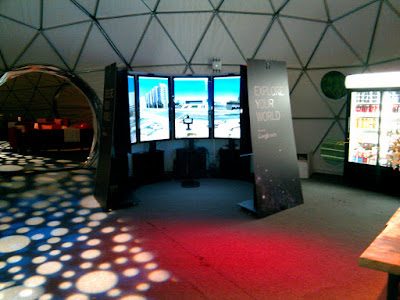As we have heard of Japan catastrophic earthquake and tsunami few weeks ago, the similar tragedy seems not yet stop. The calamity is still continued and now it happen around northern part of the country. Around the world is covered by a lot of sadness and sorrow as it occurred to the country that we are always love most. Recent Fukushima nuclear crisis is now being handle by autonomous vehicles and robots, majorly supplied by US government and companies. How can we ever imagine? Its happen just like in the movies and it is happening. This make us remind words from Einstein, imagination is more than knowledge, or at least appreciate it...
Robots supplies by iRobot, US (see more here)
Robots supplies by iRobot, US (see more here)

